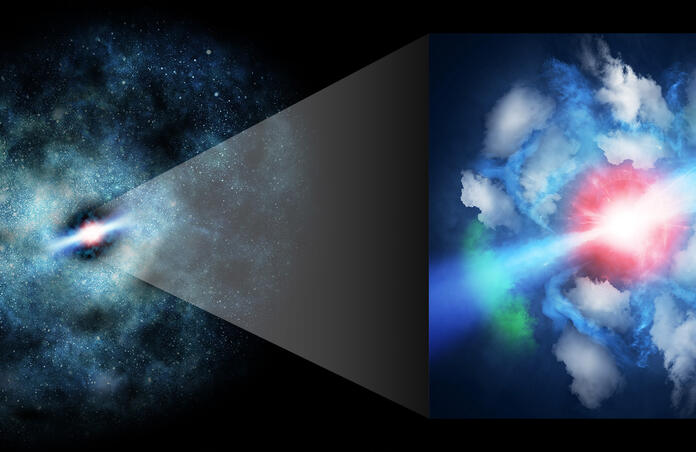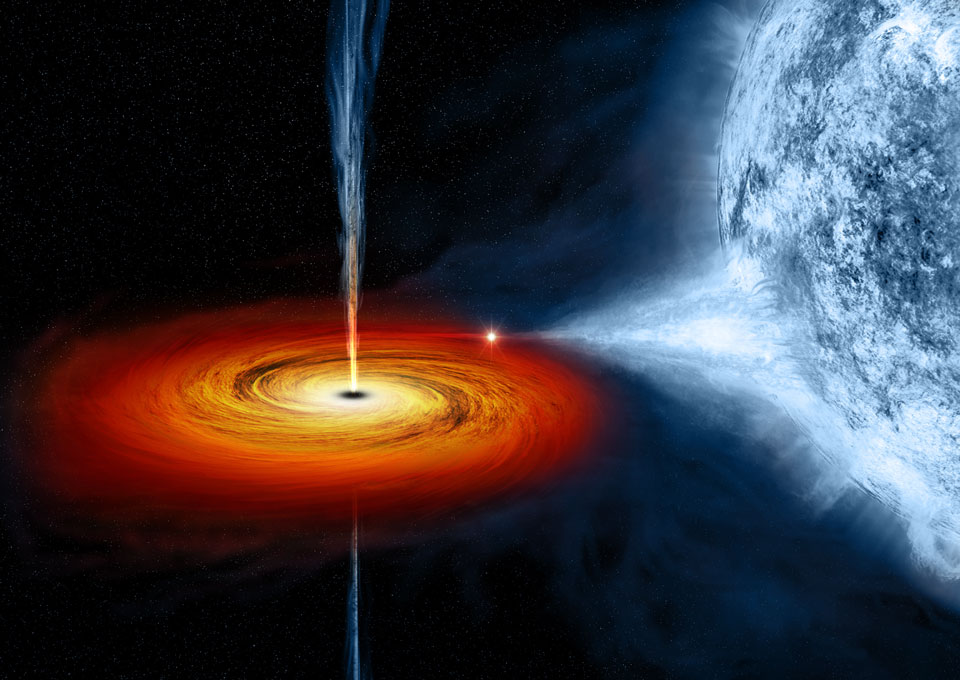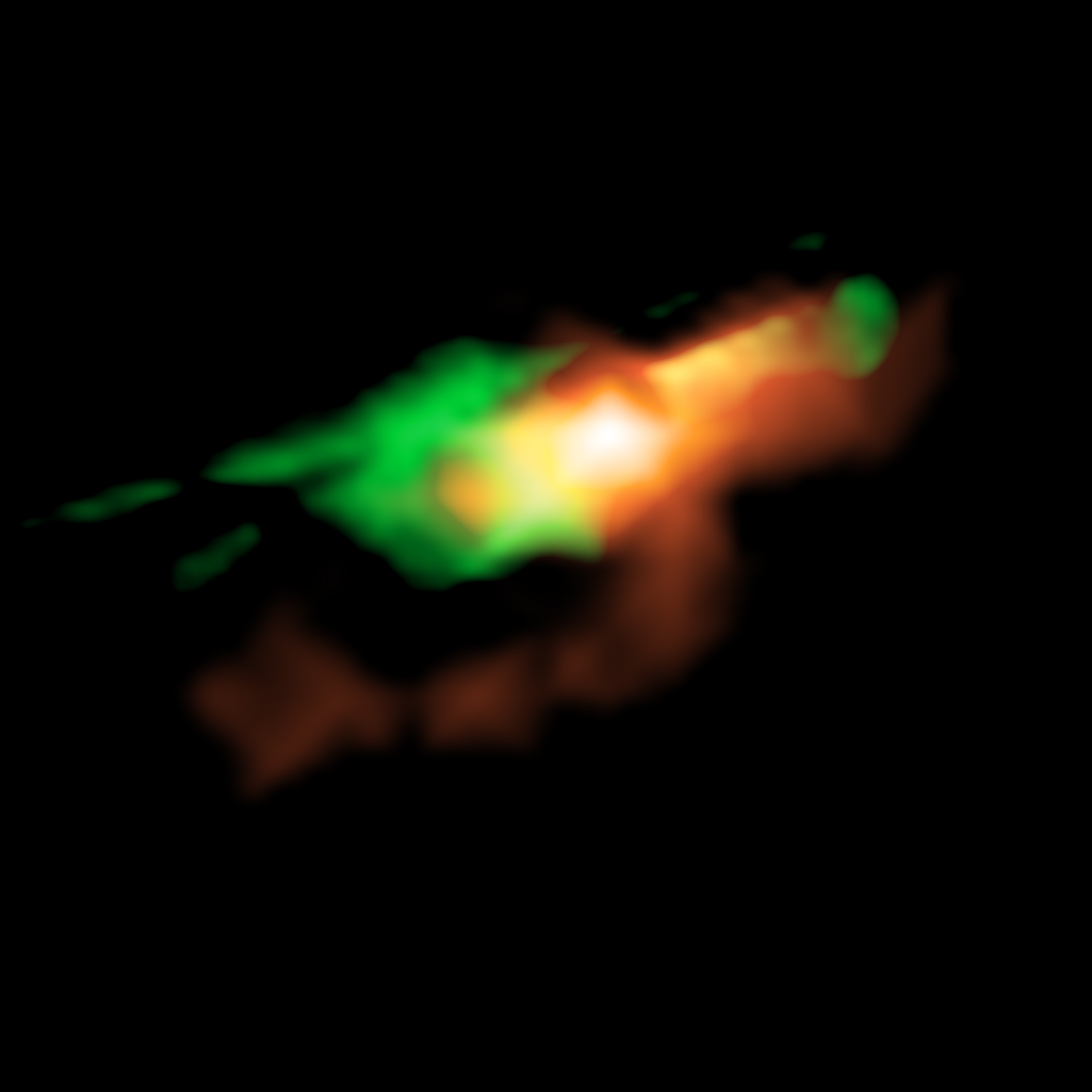Astronomers Observe Ancient Black Hole Firing Jets of Plasma

For the first time, astronomers have captured a rare image of a supermassive black hole devouring matter and spewing out jets of heated plasma. The supermassive black hole resides in a galaxy known as MG J04014+0534—an astonishing 11 billion light-years away. Capturing a black hole in this state of plasma ejection (or in any state, for that matter) is notoriously difficult, especially considering how distant the black hole is. With the use of gravitational lensing and some help from the Atacama Large Millimeter/Submillimeter Array (ALMA), a team of researchers managed to pull it off.
Black Hole Jets
Black holes are some of the densest objects in the known universe. Their gravitational power is so immense not even light can escape their event horizons (the point of no return), making them incredibly difficult to see. However, we can see the area surrounding the event horizon, especially when something it's pulling something in. Active black holes, such as those at a center of a quasar, tend to emit large streams of ionized matter, called jets.

A black hole’s jets are believed to be caused by material traveling along its accretion disc to its polar region, where the matter is blown out at high speeds. The jets eject with such force they often disperse large clouds of nearby gaseous materials in the surrounding galaxy. This process, known as quenching, is enough to stunt the growth of stars in its galaxy significantly. This process plays a major role in the evolution of galaxies, particularly in how the early universe formed, but it's proved exceptionally difficult to actually discover any evidence of it occurring—until now.
Saved by Gravitational Lensing
At a distance of 11 billion light-years, MG J04014+0534 is impossible to view with any telescope currently available. However, there is a ‘lensing’ galaxy between MG J0414+0534 and Earth, which greatly enhances its magnification. The astronomers who captured the images made full use of this phenomenon. “This distortion works as a ‘natural telescope’ to enable a detailed view of distant objects,” says Takeo Minezaki, a member of the research team and an associate professor at the University of Tokyo.

A reconstructed image of MG J0414+0534 with the effects of gravitational lensing removed. The areas of red show emissions from dust and ionized gas, while the green areas indicate carbon monoxide gas. Credit: ALMA (ESO/NAOJ/NRAO), K. T. Inoue et al.
Using the ALMA telescope in combination with this phenomenon provided incredible results. Another member of the team, Kouichiro Nakanishi of the National Astronomical Observatory of Japan/SOKENDAI, says that “combining this cosmic telescope and ALMA’s high-resolution observations, we obtained exceptionally sharp vision, that is 9,000 times better than human eyesight.” Nakanishi added that "with this extremely high resolution, we were able to obtain the distribution and motion of gaseous clouds around jets ejected from a supermassive black hole."
Their Findings & Future Possibilities
Aside from obtaining fascinating images of the black hole jets, the team found that the jets moved at speeds as high as 600 km/s and were also much smaller than other galaxies at the same age. Satoki Matsushita points out, “we are perhaps witnessing the very early phase of jet evolution in the galaxy. It could be as early as several tens of thousands of years after the launch of the jets.”
As for the impact of the research on future projects, the possibilities are promising. Kaiki Inoue, the lead author of the paper, says, "We found telltale evidence of significant interaction between jets and gaseous clouds even in the very early evolutionary phase of jets. I think that our discovery will pave the way for a better understanding of the evolutionary process of galaxies in the early universe."
Their research was published in the Astrophysical Journal Letters.